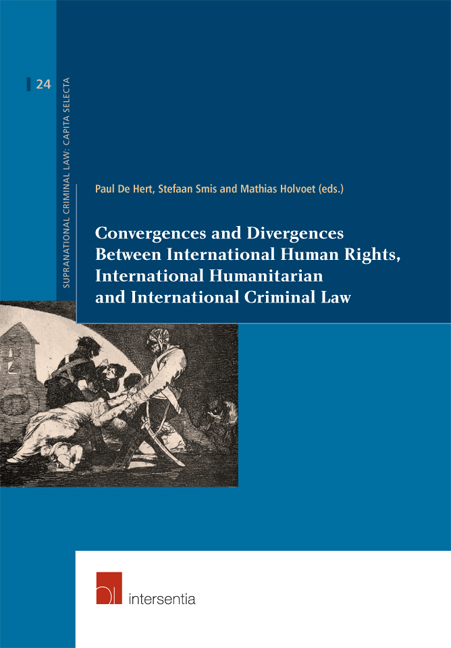Book contents
- Frontmatter
- Foreword
- Preface
- Contents
- About the Contributors
- Part I Convergences and Divergences between International Human Rights Law and International Criminal Law Stricto Sensu
- Part II Convergences and Divergences between International Human Rights Law and Transnational Criminal Law
- Strengthening Action to End Forced Labour: The Ilo Forced Labour Protocol and States’ Positive Human Rights Obligations
- The International Law of Human Trafficking: At the Forefront of the Convergence between Transnational Criminal Law and International Human Rights Law?
- International Security and Financial Stability: Resolving Norm Conflicts between Anti-corruption and Individual Rights
- Part III Convergences and Divergences between International Human Rights Law and International Humanitarian Law
- Conclusion
- Index
- About the Editors
Strengthening Action to End Forced Labour: The Ilo Forced Labour Protocol and States’ Positive Human Rights Obligations
from Part II - Convergences and Divergences between International Human Rights Law and Transnational Criminal Law
Published online by Cambridge University Press: 11 October 2018
- Frontmatter
- Foreword
- Preface
- Contents
- About the Contributors
- Part I Convergences and Divergences between International Human Rights Law and International Criminal Law Stricto Sensu
- Part II Convergences and Divergences between International Human Rights Law and Transnational Criminal Law
- Strengthening Action to End Forced Labour: The Ilo Forced Labour Protocol and States’ Positive Human Rights Obligations
- The International Law of Human Trafficking: At the Forefront of the Convergence between Transnational Criminal Law and International Human Rights Law?
- International Security and Financial Stability: Resolving Norm Conflicts between Anti-corruption and Individual Rights
- Part III Convergences and Divergences between International Human Rights Law and International Humanitarian Law
- Conclusion
- Index
- About the Editors
Summary
INTRODUCTION
The adoption of the International Labour Organization Protocol of 2014 to the Forced Labour Convention, 1930 (No. P029) (the ILO Protocol) and the accompanying Forced Labour (Supplementary Measures) Recommendation 2014 (No. 203) (the Recommendation) 1 reinforces the need for a strengthened legal framework to address the existence, globally, of significant implementation gaps in combating forced labour. The 2012 ILO Global Estimate of Forced Labour states that 20.9 million people are victims of forced labour. Three-quarters of labour exploitation occurs in productive activities such as agriculture, domestic work, construction, fisheries and manufacturing, and the remainder involves commercial sexual exploitation.
Section 2 of this chapter will outline the principal elements of the ILO forced labour framework aimed at tackling forced labour, as well as beginning to establish the convergence with international human rights law (IHRL) from a historical perspective. Section 3 of the chapter will determine the convergence of forced labour and the positive human rights obligations on States. An examination of the HRL jurisprudence will illustrate growing acceptance that States have a duty to protect against non-State human rights abuses within their territory and/or jurisdiction. An estimated 90 per cent of forced labour today occurs in the ‘private economy’, therefore perpetrators are non-State actors not accountable for violations of human rights. Taking this figure into account, this chapter will suggest that the suppression of forced labour therefore necessitates preventive action by States who are bound by the ILO forced labour conventions and positive human rights obligations.
In section 4 of this chapter, the ILO Protocol and its accompanying Recommendation will be introduced by outlining the rationale that led up to the drafting process of the ILO Protocol and some of its main features, while taking into account the contemporary context in which forced labour occurs. Finally, section 5 of this chapter will outline the measures that can be implemented to strengthen action to end forced labour. Particular focus will be placed upon the application of positive human rights obligations, as developed by human rights jurisprudence in the context of human trafficking, when operationalising the measures outlined by the ILO Protocol, including the provision of strong victim protection measures, appropriate and accessible justice and compensation mechanisms.
- Type
- Chapter
- Information
- Convergences and Divergences Between International Human Rights, International Humanitarian and International Criminal Law , pp. 73 - 100Publisher: IntersentiaPrint publication year: 2018



